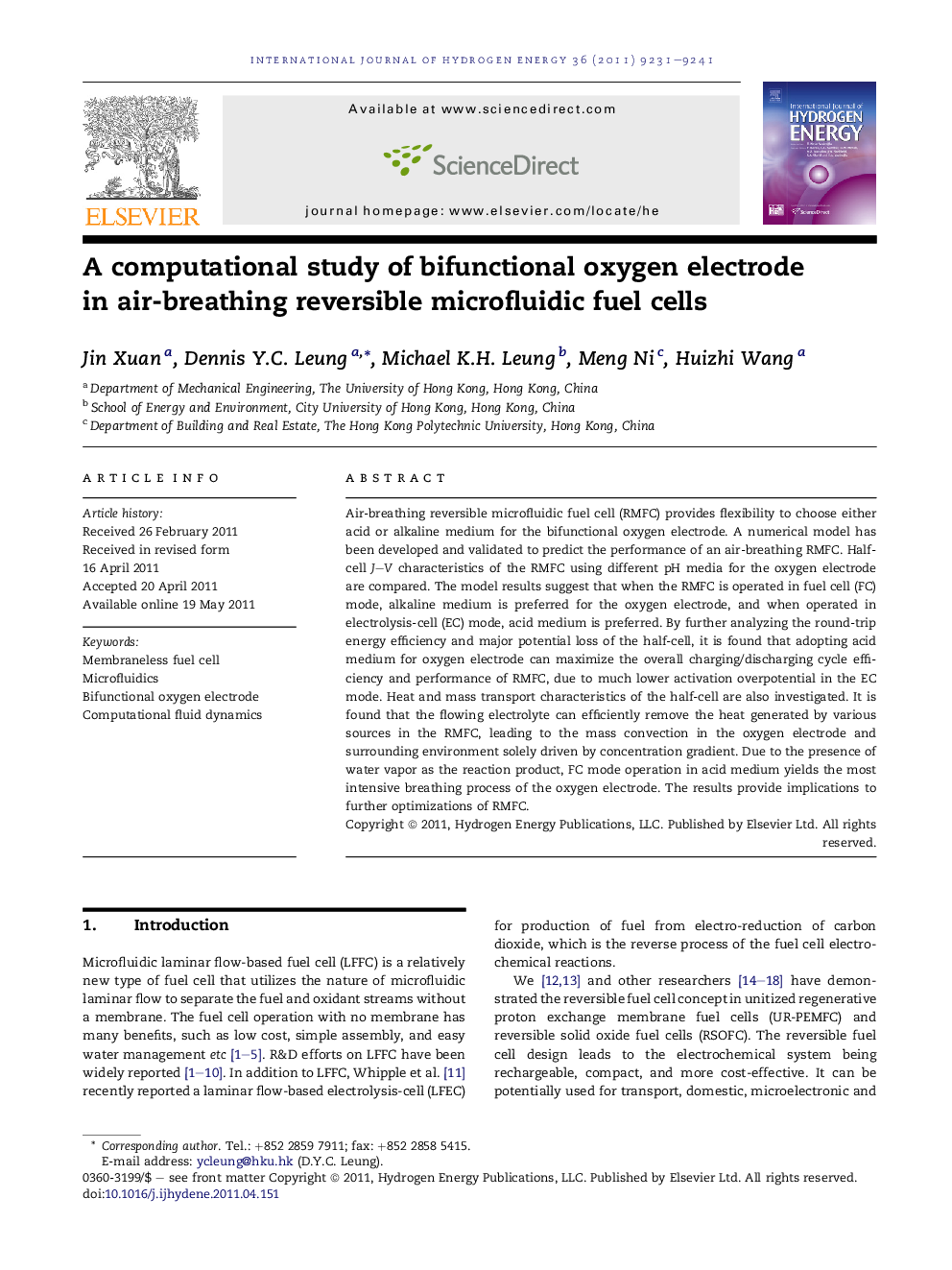| Article ID | Journal | Published Year | Pages | File Type |
|---|---|---|---|---|
| 1282519 | International Journal of Hydrogen Energy | 2011 | 11 Pages |
Air-breathing reversible microfluidic fuel cell (RMFC) provides flexibility to choose either acid or alkaline medium for the bifunctional oxygen electrode. A numerical model has been developed and validated to predict the performance of an air-breathing RMFC. Half-cell J–V characteristics of the RMFC using different pH media for the oxygen electrode are compared. The model results suggest that when the RMFC is operated in fuel cell (FC) mode, alkaline medium is preferred for the oxygen electrode, and when operated in electrolysis-cell (EC) mode, acid medium is preferred. By further analyzing the round-trip energy efficiency and major potential loss of the half-cell, it is found that adopting acid medium for oxygen electrode can maximize the overall charging/discharging cycle efficiency and performance of RMFC, due to much lower activation overpotential in the EC mode. Heat and mass transport characteristics of the half-cell are also investigated. It is found that the flowing electrolyte can efficiently remove the heat generated by various sources in the RMFC, leading to the mass convection in the oxygen electrode and surrounding environment solely driven by concentration gradient. Due to the presence of water vapor as the reaction product, FC mode operation in acid medium yields the most intensive breathing process of the oxygen electrode. The results provide implications to further optimizations of RMFC.
► We model air-breathing reversible microfluidic fuel cell (RMFC). ► Adopting acid medium maximizes the overall efficiency of oxygen electrode. ► Heat generated in RMFC can be efficiently removed. ► Adopting acid medium yields intensified air-breathing processes.
